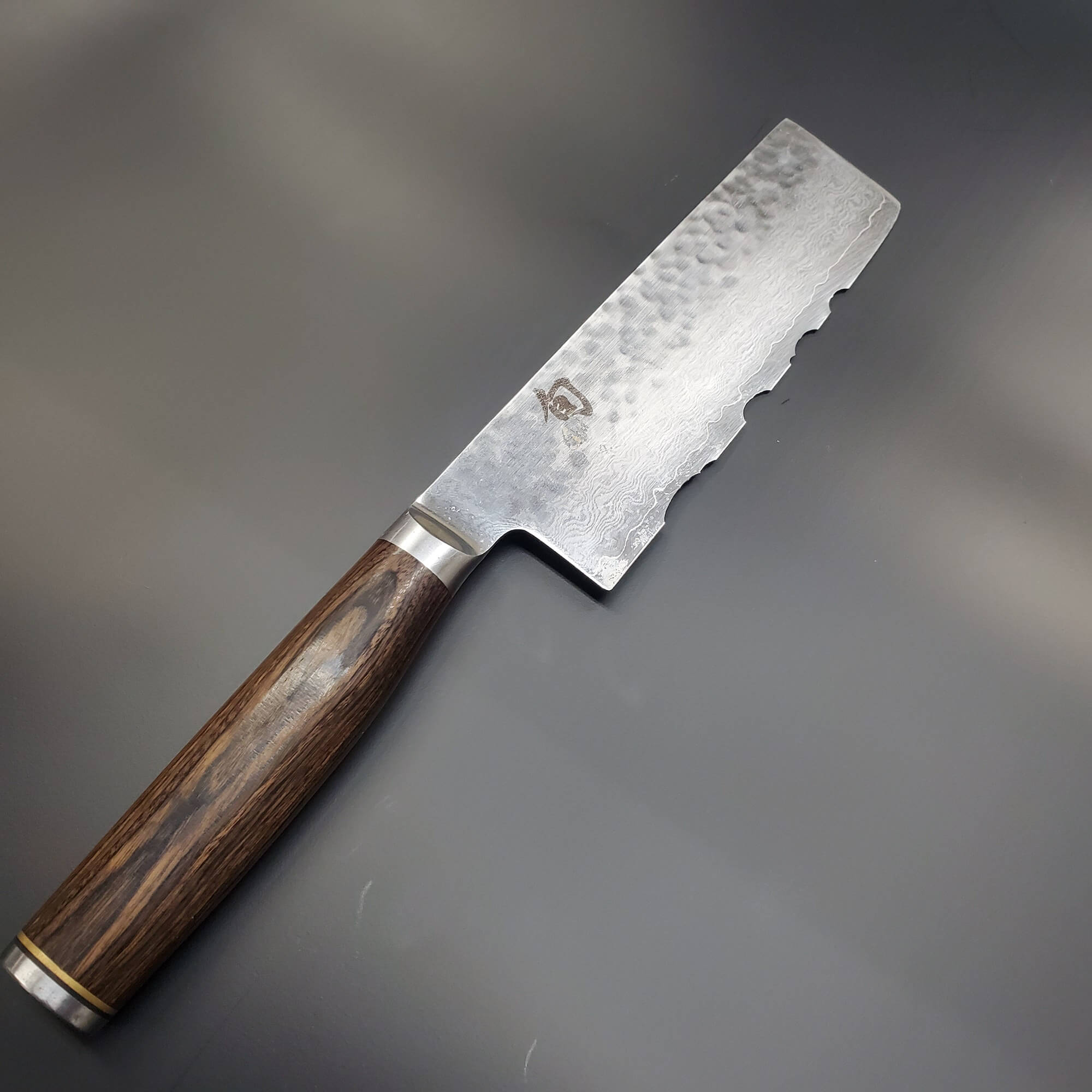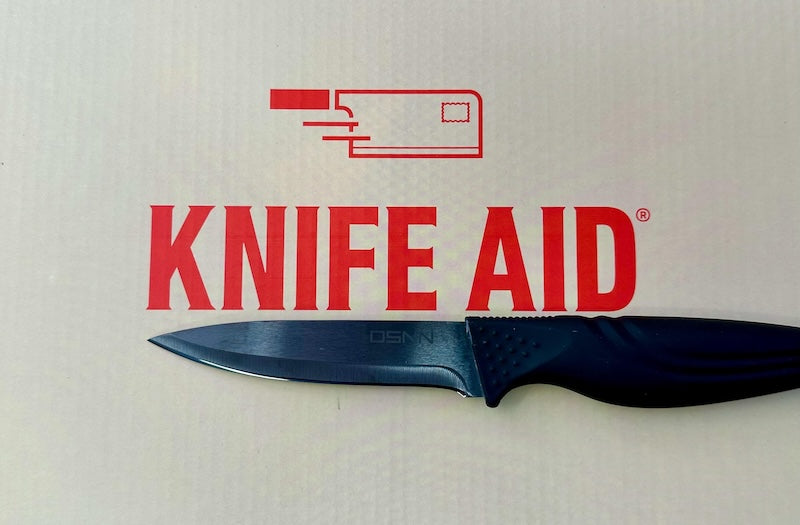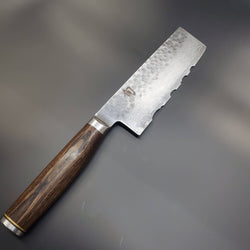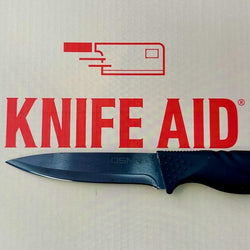How To Test The Sharpness Of A Knife
Top 5 Tests For Sharp Knives
If your knives are not cutting it anymore, they are definitely not sharp enough. But how do you know if your knife is sharp or dull, and when is it time to get them sharpened?
Below is our list of the five best (and worst) tests for sharp knives. Before you get started, consider what you want your knife to do. We sharpen different knives differently, i.e. a cleaver will never cut in the same way as a filleting knife, and it is not supposed to. We recommend testing your knives’ sharpness on different materials, according to their original purpose.
1. The thumb test
The thumb test seems a little scary at first - and we urge caution! - but it is the fastest and most reliable knife sharpness test:
Put the thumb lightly on the edge, and pull away across the blade (never along). If it feels smooth and round and slides without any resistance, it is dull and needs sharpening. If it feels sharp and tacky, like it wants to bite in, it is sharp. We always test on the belly of the knife closer to the tip, as this is where blades usually get used the most.
2. The paper test
To test the sharpness of your knives with paper, we recommend newspaper or the thin pages of a glossy magazine. Hold the sheet of paper by the edge and place the heel of your knife at a 45 degree angle to the paper. Slice through it diagonally in a downward motion as you pull the blade through the paper from the heel to the tip.
If it catches or doesn’t cut, your knives need to be sharpened. This technique needs a bit of practice! The paper sharpness test works for most knives, even serrated bread knives.
3. The pen or nail test
If you like your nails, we recommend using a pen to test the sharpness of your knife. Use a simple plastic pen, and place your knife at a 45 degree angle against it. Slide it over the plastic. If it bites in, it is still sharp - if it slides sideways, it’s time to get your knife sharpened again.
4. The basil test
Another sharpness test for knives is slicing basil leaves: when harvesting, make sure you have the tiniest bit of stem left on the leaves. Stack them, roll them up. Using the thinnest (!) and sharpest knife that you have, slice or chop your leaves. A sharp knife will still create darker green to slightly brown leaves, but a dull knife (or one with a wider blade) will bruise the leaves more, and quickly turn your basil an unsightly color. While some oxidation is natural, try limiting the process by choosing the right kind of knife and getting it as sharp as possible.
5. The tomato test

Last and definitely least, the tomato test is maybe the most known (thank you, Internet), but also the least reliable test for knife sharpness. How well the blade bites into the skin doesn’t really tell you about the sharpness of the knife. It only tells you about the grittiness of the blade. Towards the end of the sharpening process, we buff knives to smooth out any burrs that occur while sharpening. If we would skip that step, all knives would work amazingly on tomatoes, but they would get dull very fast.
This is especially true for Santoku, Nakiri, and all other knives with a flat ‘bottom’ and a downward pointing tip. These knives aren’t designed to slice tomatoes, and they are not sharpened in that way. They are meant for chopping.
The best knife for tomatoes is a small serrated knife. Its teeth bite easily into fruits with a tough skin but soft flesh. Depending on the texture of the tomato, you might be able to press a super sharp Santoku knife onto a squishy fruit and squash it, rather than cut into it. Still, this doesn’t say anything about the sharpness of your knife.










